Research for Flow Behavior of Heavy Oil by N2 Foam-Assisted Steam (NFAS) Flooding: Microscopic Displacement Experiment Study
Abstract
:1. Introduction
2. Materials and Methods
2.1. Formation Water
2.2. Crude Oil
2.2.1. Crude Oil Viscosity
2.2.2. Oil–Water Interfacial Tension (IFT)
2.3. Multi-Effect Surfactant
2.3.1. Preparation of Multi-Effect Surfactant
2.3.2. Foam Performance
3. Experimental Methods and Procedures
3.1. Experimental Equipment
3.2. Experimental Procedures
- (1)
- Connect the experimental apparatus and pipelines; in particular, some pipelines at the visualization device entrances.
- (2)
- To establish a confining pressure of 3 MPa, connect the pressure gauge to the confining pressure pipeline of the visualization experimental device. Then, incrementally introduce water at a flow rate of 0.01 mL/min until the desired pressure of 3 MPa is achieved.
- (3)
- An ISCO pump was set to 0.01 mL/min to saturate oil, and the pressure of the outlet end and the inlet end should not exceed 1 MPa.
- (4)
- Conduct a steam flooding simulation by employing a microscopic model temperature controller to elevate the visualization device temperature to 100 °C. Introduce hot steam into the micro-etched glass containing oil-saturated samples, utilizing an ISCO plunger pump set to an injection rate of 0.01 mL/min. Record the oil sample flow and state changes of the camera system.
- (5)
- Simulate NFAS flooding. Connect a unidirectional valve, desiccator, and gas flow meter to the N2 gas tank. Set the N2 injection rate to 0.015 mL/min and the multi-effect surfactant solution (0.5 wt%) to 0.015 mL/min and simultaneously conduct foaming with the foam generator.
3.3. Experimental Parameters
3.4. Analytical Method
3.4.1. Flow Zone Division
3.4.2. Pore Structure Division
3.4.3. Residual Oil State Division
4. Results
4.1. Steam Flooding Phase
4.1.1. Main Flow Channel Zone
- (1)
- Remaining oil occurrence state
- (2)
- Remaining oil occurrence pattern
4.1.2. Near Flow Channel Zone
- (1)
- Remaining oil occurrence state
- (2)
- Remaining oil occurrence pattern
4.1.3. Far Flow Channel Zone
- (1)
- Remaining oil occurrence state
- (2)
- Remaining oil occurrence pattern
4.2. NFAS Flooding Process
4.2.1. Main Channel Zone
- (1)
- Residual oil occurrence state
- (2)
- Residual oil occurrence pattern
4.2.2. Near Channel Zone
- (1)
- Residual oil occurrence state
- (2)
- Residual oil occurrence pattern
4.2.3. Far Channel Zone
- (1)
- Residual oil occurrence state
- (2)
- Residual oil occurrence pattern
4.3. Discussion
5. Conclusions
- (1)
- The parameters of N2 and the multi-effect surfactant were determined. The gas–liquid ratio of N2 and the multi-effect surfactant is 1:1, and the optimal concentration of the multi-effect surfactant is 0.5 wt%.
- (2)
- In the steam flooding stage, the residual oil assumes a columnar form, film-like, and continuous, and the remaining oil is clustered and flaky in different regions. The residual oil in the main channel is mostly distributed in the fine pore throat. In the near channel, it is mainly found in pore throats with a Pore Coordination Number (PCN) of 3 to 4. In the far flow channel, it is predominantly distributed in pore throats with a PCN of 4 to 5.
- (3)
- During NFAS flooding, there is an obvious emulsification and dispersion phenomenon, and the remaining oil in different regions is significantly different. The remaining oil appears as an O/W emulsion and in columnar, film, and island forms. After NFAS flooding, the remaining oil is dispersed in each throat of the main channel. In the near channel, the residual oil is mostly blocked by foam in pore throats with a PCN of 4 to 5. In the far channel, the remaining oil is distributed in the thick and middle pore throats.
Author Contributions
Funding
Data Availability Statement
Acknowledgments
Conflicts of Interest
References
- Whorton, L.P.; Brownscombe, E.R.; Dyes, A.B. Method for Producing Oil by Means of Carbon Dioxide. U.S. Patent No. 2,623,596, 30 December 1952. [Google Scholar]
- Mohan, H.; Carolus, M.; Biglarbigi, K. The Potential for Additional Carbon Dioxide Flooding Projects in the United States. In Proceedings of the SPE Symposium on Improved Oil Recovery, Tulsa, OK, USA, 19–23 April 2008. [Google Scholar]
- Romero, C.; Alvarez, J.M.; Müller, A.J.; Bolívar, U.S. Micromodel Studies of Polymer-Enhanced Foam Flow Through Porous Media. In Proceedings of the SPE/DOE Improved Oil Recovery Symposium, Tulsa, PK, USA, 13–17 April 2002. [Google Scholar]
- Farajzadeh, R.; Wassing, B.; Boerrigter, P. Foam Assisted Gas Oil Gravity Drainage in Naturally-Fractured Reservoirs. In Proceedings of the SPE Annual Technical Conference and Exhibition, Florence, Italy, 20–22 September 2010. [Google Scholar]
- Kovscek, A.R.; Radke, C.J. Fundamentals of Foam Transport in Porous Media. In Foams: Fundamentals and Applications in the Petroleum Industry; American Chemical Society: Washington, DC, USA, 1994; Volume 242, pp. 115–163. [Google Scholar]
- Pancharoen, M.; Fernø, M.A.; Kovscek, A.R. Modeling foam displacement in fractures. J. Pet. Sci. Eng. 2012, 100, 50–58. [Google Scholar] [CrossRef]
- Yan, W.; Miller, C.A.; Hirasaki, G.J. Foam sweep in fractures for enhanced oil recovery. Colloids Surf. A Physicochem. Eng. Asp. 2006, 282–283, 348–359. [Google Scholar] [CrossRef]
- Borchardt, J.K.; Bright, D.B.; Dickson, M.K.; Wellington, S.L. Surfactants for CO2 Foam Flooding. In Proceedings of the SPE Annual Technical Conference and Exhibition, Las Vegas, NV, USA, 22–15 September 1985. [Google Scholar]
- Nguyen, Q.P.; Rossen, W.R.; Zitha, P.L.J.; Currie, P.K. Determination of Gas Trapping with Foam Using X-ray Computed Tomography and Effluent Analysis. SPE J. 2009, 14, 222–236. [Google Scholar] [CrossRef]
- Roozbahani, A.; Soofivand, F.; Al-Tameemi, A.S.H.; Abdollahi, H.; Saatchi, S.; Ansari, A. A contrasting analysis of CO2 and N2 foam flood for enhanced oil recovery and geological storage of CO2. Pet. Res. 2024, 9, 55–60. [Google Scholar] [CrossRef]
- Pang, Z.; Liu, H.; Zhu, L. A laboratory study of enhancing heavy oil recovery with steam flooding by adding nitrogen foams. J. Pet. Sci. Eng. 2015, 128, 184–193. [Google Scholar] [CrossRef]
- Zhang, Y.; Li, B.; Lu, T.; Li, Z.; Zeng, X.; Song, Y. Adaptation study on nitrogen foam flooding in thick reservoirs with high water cut and high permeability. Colloids Surf. A Physicochem. Eng. Asp. 2023, 657, 130539. [Google Scholar] [CrossRef]
- Liang, T.; Hou, J. Fluids flow behaviors of nitrogen and foam-assisted nitrogen floods in 2D visual fault-karst carbonate reservoir physical models. J. Pet. Sci. Eng. 2021, 200, 108286. [Google Scholar] [CrossRef]
- Gamadi, T.D.; Sheng, J.J.; Soliman, M.Y. An Experimental Study of Cyclic Gas Injection to Improve Shale Oil Recovery. In Proceedings of the SPE Annual Technical Conference and Exhibition, Tulsa, OK, USA, 14–18 April 2013. [Google Scholar]
- Yu, Y.; Sheng, J.J. In An Experimental Investigation of the Effect of Pressure Depletion Rate on Oil Recovery from Shale Cores by Cyclic N2 Injection. In Proceedings of the SPE/AAPG/SEG Unconventional Resources Technology Conference, San Antonio, TX, USA, 20–22 July 2015. [Google Scholar]
- Naylor, P.; Frørup, M. Gravity-Stable Nitrogen Displacement of Oil. In Proceedings of the SPE Annual Technical Conference and Exhibition, San Antonio, TX, USA, 8–11 October 1989. [Google Scholar]
- Wei, P.; Pu, W.; Sun, L.; Wang, B. Research on nitrogen foam for enhancing oil recovery in harsh reservoirs. J. Pet. Sci. Eng. 2017, 157, 27–38. [Google Scholar] [CrossRef]
- Vicencio, O.A.; Sepehrnoori, K.; Miller, M.A. Simulation of Nitrogen Injection into Naturally Fractured Reservoirs. In Proceedings of the SPE International Petroleum Conference in Mexico, Puebla Pue, Mexico, 7–9 November 2004. [Google Scholar]
- Wu, X.; Ling, K.; Liu, D. Nitrogen Injection Experience to Development Gas and Gas Condensate Fields in Rocky Mountains. In Proceedings of the International Petroleum Technology Conference, Beijing, China, 26–28 March 2013. [Google Scholar]
- Rezaee, M.; Hosseini-Nasab, S.M.; Fahimpour, J.; Sharifi, M. New Insight on improving foam stability and foam flooding using fly-ash in the presence of crude oil. J. Pet. Sci. Eng. 2022, 214, 110534. [Google Scholar] [CrossRef]
- Yang, J.; Hou, J. Experimental study on gas channeling characteristics of nitrogen and foam flooding in 2D visualized fractured-vuggy model. J. Pet. Sci. Eng. 2020, 192, 107334. [Google Scholar] [CrossRef]
- Li, Y.; Di, Q.; Hua, S.; Jia, X.; Zhou, X.; Wang, W.; Chen, H. Visualization of Foam Migration Characteristics and Displacement Mechanism in Heterogeneous Cores. Colloids Surf. A Physicochem. Eng. Asp. 2020, 607, 125336. [Google Scholar] [CrossRef]
- Yu, Y.; García, B.F.; Saraji, S. Surfactant viscoelasticity as a key parameter to improve supercritical CO2 foam stability/foamability and performance in porous media. J. Non-Newton. Fluid Mech. 2020, 282, 104311. [Google Scholar] [CrossRef]
- Tao, L.; Liu, X.; Shang, H.; Zhang, N.; Shi, W.; Bai, J.; Xu, Z.; Zhu, Q.; Zhong, Y. Effects Evaluation on Multiround Injection of a N2 Foam & Viscosity Reducer to Improve the Recovery of Fault-Block Heavy Oil Reservoir with Edge-Bottom Water: A Two-Dimensional Visualization Experimental Study. Energy Fuels 2023, 37, 18785–18800. [Google Scholar]
- Shi, W.; Ma, Y.; Tao, L.; Zhang, N.; Ma, C.; Bai, J.; Xu, Z.; Zhu, Q.; Zhong, Y. Study of the Enhanced Oil Recovery Mechanism and Remaining Oil State of Heavy Oil after Viscosity-Reducer-Assisted CO2 Foam Flooding: 2D Microvisualization Experimental Case. Energy Fuels 2023, 37, 18620–18631. [Google Scholar] [CrossRef]
- Shi, W.; Xu, L.; Tao, L.; Zhu, Q.; Bai, J. Flow behaviors and residual oil characteristics of water flooding assisted by multi-effect viscosity reducer in extra heavy oil reservoir. Pet. Sci. Technol. 2022, 41, 1231–1249. [Google Scholar] [CrossRef]
- Jiang, Y.; Killough, J.E.; Wu, X.; Cui, Y. Transient Temperature Impact on Deep Reservoir Fracturing. Geofluids 2021, 2021, 6653442. [Google Scholar] [CrossRef]
- Jiang, Y.; Yuan, F.; Zhang, Y.; Wu, X. Transient Heat Behaviours in Well and Surrounding Formation. In Proceedings of the Second Thermal and Fluids Engineering Conference, Las Vegas, NV, USA, 2–5 April 2017. [Google Scholar] [CrossRef]
- Jiang, Y.; Killough, J.E.; Cui, Y. A Numerical Simulation Approach for Shale Fracture Network Characterization Using Hybrid EDFM Method. Lithosphere 2021, 2021, 4254028. [Google Scholar] [CrossRef]
- Jiang, Y.; Killough, J.E.; Cui, Y. EDFM-based Multi-Continuum Shale Gas Simulation with Low Velocity Non-Darcy Water Flow Effect. In Proceedings of the SPE Reservoir Simulation Conference, On-Demand, Online, 4–6 October 2021. SPE-203988-MS. [Google Scholar] [CrossRef]
- Jiang, Y. Transient Temperature Behavior in Wellbore and Surrounding Formation. 12 May 2017. Available online: https://hdl.handle.net/11244/50876 (accessed on 17 June 2024).
- Bondarenko, A.V.; Islamov, S.R.; Mardashov, D.V. Features of oil well killing in abnormal carbonate reservoirs operating conditions. In Proceedings of the 15th Conference and Exhibition Engineering and Mining Geophysics, Gelendzhik, Russia, 22–26 April 2019; pp. 629–633. [Google Scholar] [CrossRef]
- Islamov, S.; Islamov, R.; Shelukhov, G.; Sharifov, A.; Sultanbekov, R.; Ismakov, R.; Agliullin, A.; Ganiev, R. Fluid-Loss Control Technology: From Laboratory to Well Field. Processes 2024, 12, 114. [Google Scholar] [CrossRef]
- Babadagli, T.; Al-Bemani, A.; Boukadi, F.; Iyoho, A.W. EOR Possibilities for Development of a Mature Light-Oil Reservoir in Oman. In Proceedings of the SPE Asia Pacific Improved Oil Recovery Conference, Kuala Lumpur, Malaysia, 20–21 October 2001. [Google Scholar]
- Srivastava, M.; Zhang, J.; Nguyen, Q.P.; Pope, G.A. A Systematic Study of Alkaline-Surfactant-Gas Injection as an EOR Technique. In Proceedings of the SPE Annual Technical Conference and Exhibition, New Orleans, LA, USA, 4–7 October 2009. [Google Scholar]
- Denoyelle, L.; Bardon, C.; de Murville, E.C. Interpretation of a CO2/N2 Injection Field Test in a Moderately Fractured Carbonate Reservoir. SPE Reserv. Eng. 1988, 3, 220–226. [Google Scholar] [CrossRef]
- Nafisi, F.; Tavakoli, V. The role of textural parameters of industrial core CT scan images in detecting the petrophysical characteristics of carbonate reservoirs, Permian Dalan Formation, the central Persian Gulf. Geoenergy Sci. Eng. 2023, 230, 212277. [Google Scholar] [CrossRef]


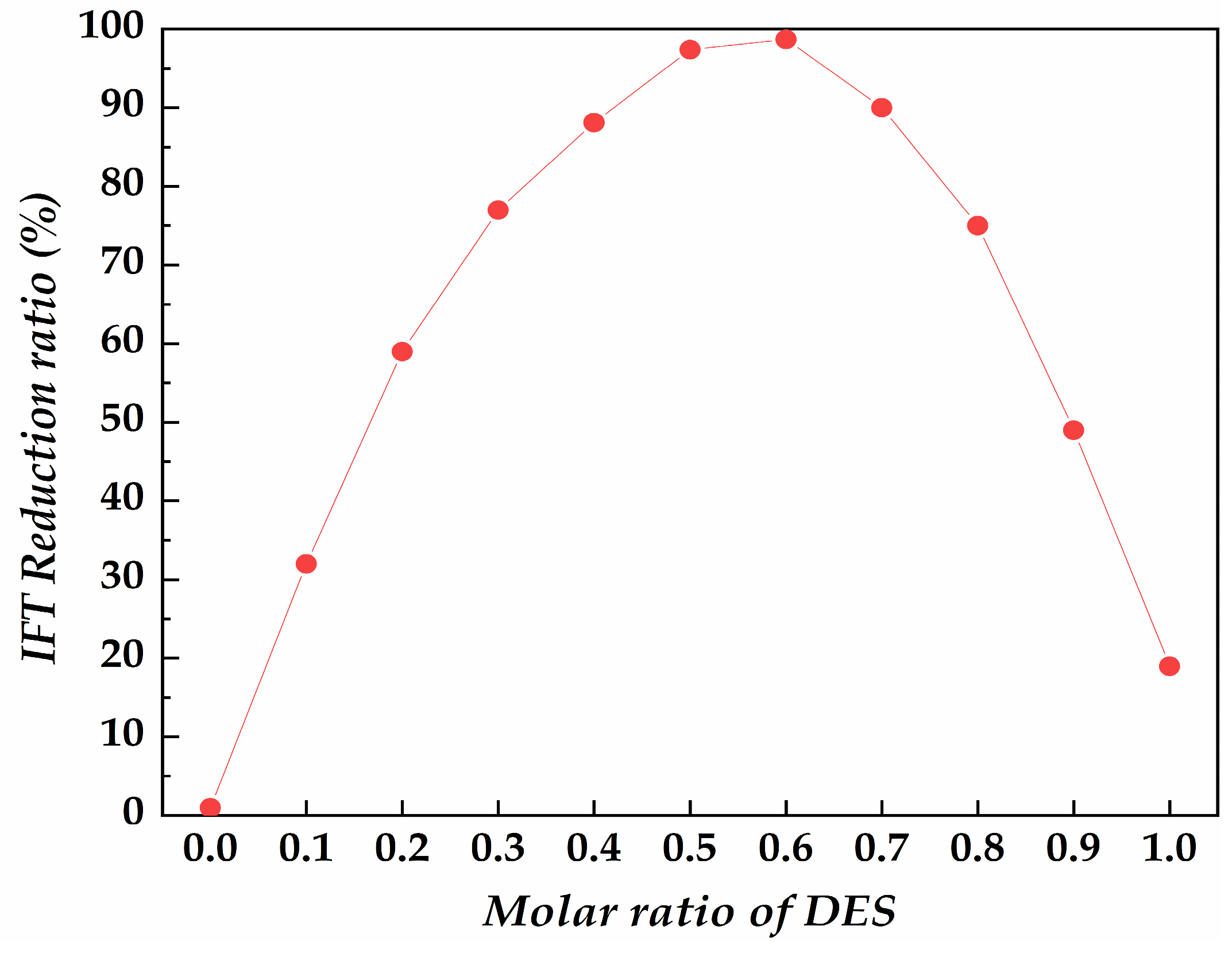

















| Process | Temperature (°C) | Injection Rate (mL/min) | Injection Volume (PV) | |
|---|---|---|---|---|
| Steam flooding | 100~150 | 0.010 | 0~1.0 | |
| NFAS flooding | 100~150 | Multi-effect surfactant solution (0.5 wt%) | N2 | 1.0~3.0 |
| 0.015 | 0.015 | |||
| Type | Shape State | Phase Stage | Schematic Diagram |
|---|---|---|---|
| Continuous residual oil | Long-slug | Continuous phase | 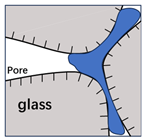 |
| Cluster | Continuous phase |  | |
| Dispersed residual oil | Columnar | Discontinuous phase |  |
| Film-like | Discontinuous phase | 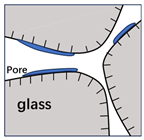 | |
| Corneal-like | Discontinuous phase |  | |
| Island-like | Mixed phase |  |
| Process | Stage | Injection Volume (PV) | Recovery Efficiency (%) |
|---|---|---|---|
| Steam flooding | Early | 0.25 | 15.6 |
| Middle | 0.75 | 18.7 | |
| Late | 1.0 | 23.4 | |
| NFAS flooding | Early | 1.5 | 52.2 |
| Middle | 2.0 | 61.9 | |
| Late | 3.0 | 68.3 |
| Process | 0.25 PV | 0.75 PV | 1.0 PV |
|---|---|---|---|
| Steam flooding |  | 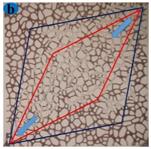 | 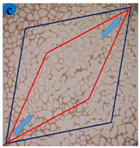 |
| 1.5 PV | 2.0 PV | 3.0 PV | |
| NFAS flooding | 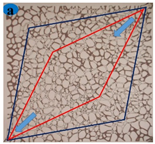 | 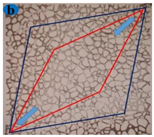 |  |
Disclaimer/Publisher’s Note: The statements, opinions and data contained in all publications are solely those of the individual author(s) and contributor(s) and not of MDPI and/or the editor(s). MDPI and/or the editor(s) disclaim responsibility for any injury to people or property resulting from any ideas, methods, instructions or products referred to in the content. |
© 2024 by the authors. Licensee MDPI, Basel, Switzerland. This article is an open access article distributed under the terms and conditions of the Creative Commons Attribution (CC BY) license (https://creativecommons.org/licenses/by/4.0/).
Share and Cite
Fu, Q.; Yang, Z.; Liu, Y.; Chen, M. Research for Flow Behavior of Heavy Oil by N2 Foam-Assisted Steam (NFAS) Flooding: Microscopic Displacement Experiment Study. Processes 2024, 12, 1775. https://doi.org/10.3390/pr12081775
Fu Q, Yang Z, Liu Y, Chen M. Research for Flow Behavior of Heavy Oil by N2 Foam-Assisted Steam (NFAS) Flooding: Microscopic Displacement Experiment Study. Processes. 2024; 12(8):1775. https://doi.org/10.3390/pr12081775
Chicago/Turabian StyleFu, Qiang, Zhihao Yang, Yongfei Liu, and Mingqiang Chen. 2024. "Research for Flow Behavior of Heavy Oil by N2 Foam-Assisted Steam (NFAS) Flooding: Microscopic Displacement Experiment Study" Processes 12, no. 8: 1775. https://doi.org/10.3390/pr12081775




